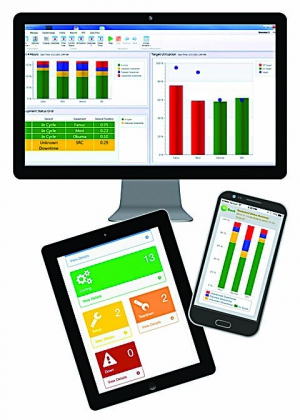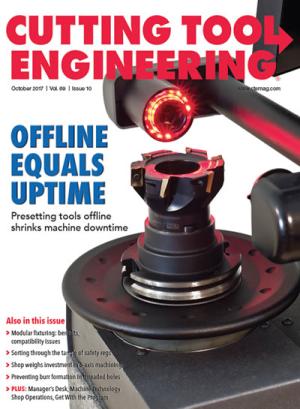Like a broken record, decision-makers at parts manufacturers continually hear that monitoring machine tool utilization rates helps improve productivity. That’s true, but the phonograph needle frequently skips over three other benefits of machine tool monitoring.

Shop personnel can monitor machines remotely with notifications sent via email or text. Image courtesy of Shop Floor Automations.
Benefit 1: Machine monitoring is flexible—it’s not just for CNC machines and limited to the shop floor. Manual machines, autoclaves, paint lines, PLC-driven machines and more can be monitored. In addition, it’s important to know about the mobility of machine monitoring. Emails and texts that provide updates on the condition of equipment being monitored can be sent to smartphones and tablets, letting shop personnel monitor operations remotely.
Benefit 2: Software integrated with a computerized maintenance management system (CMMS) can provide an accurate preventive-maintenance schedule. For those who schedule preventive maintenance with a calendar-based system, maintenance might be performed too early or too late. Monitoring actual run times on a manufacturer’s machines and feeding that information to the CMMS enable the creation of a company-specific preventive-maintenance schedule.
Benefit 3: Via machine monitoring, machinists have a voice. They can offer valuable feedback that is not easily communicated to upper management. Machinists are the ones in the trenches and usually know why a machine is not running. Data-entry screens and tablets on the shop floor give machinists the ability to write notes and let those in the back office know the reasons machines are down. This information allows managers to see trends and make adjustments.
Machine monitoring means significantly more than its name suggests.
Contact Details
Related Glossary Terms
- computer numerical control ( CNC)
computer numerical control ( CNC)
Microprocessor-based controller dedicated to a machine tool that permits the creation or modification of parts. Programmed numerical control activates the machine’s servos and spindle drives and controls the various machining operations. See DNC, direct numerical control; NC, numerical control.
—Shop Floor Automations Inc., La Mesa, Calif.

